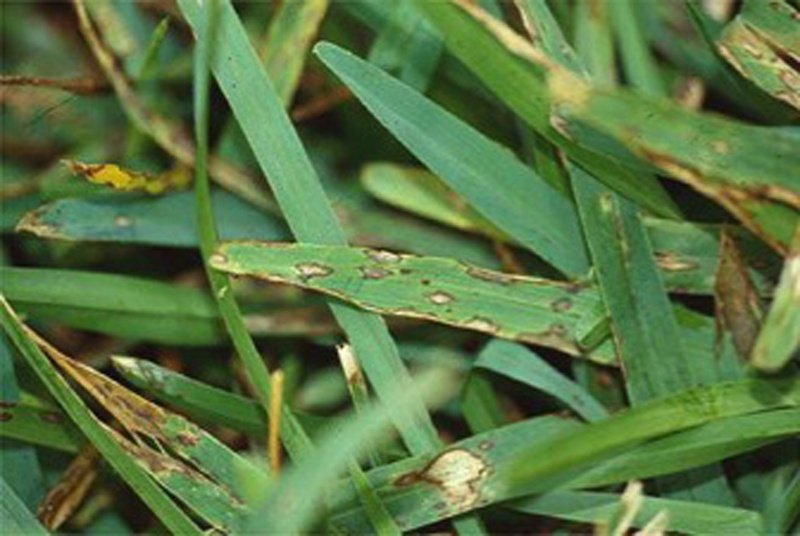
Gray Leaf Spot: A Florida Summer Turf Disease
Gray leaf spot is a turf disease that affects St. Augustinegrass primarily during Forida’s rainy, humid summers. Caused by a fungus, it presents in oblong tan spots. Gray leaf spot disease can be managed by watering early in the morning, limiting use of nitrogen fertilizers, and regularly applying fungicides.
Gray leaf spot is a disease caused by a fungus (Pyricularia grisea). In Florida, it primarily infects St. Augustinegrass turf during the humid, rainy summers when daytimes temperatures exceed 77 degrees F.
Florida St. Augustinegrass is our only warm-season turfgrass affected by gray leaf spot disease, which can thin established lawns, slow down growing-in, and kill large areas of turf. New installations of turfgrass—either sprigged or sodded—are especially vulnerable to gray leaf spot.
Signs of the disease will usually show up first in areas of turf in deep shade and along eastern or northern areas of a property.
What Gray Leaf Spot Looks Like
An oblong spot on a grass blade is the typical symptom of this disease. The center of the spot may have a gray, felt-like patch of spores. If spores aren’t present, the spot may be tan to brown, with a distinct dark brown or purple border. The area around the spots may turn yellow, parts of the blade may look yellowish, or spots may coalesce and the entire blade will look brown. In heavily infected areas, the grass can look burned or scorched.
The fungus mostly infects grass blades but can also attack stems and spikes.
How it Grows and Spreads
To germinate, gray leaf spot spores need to sit on a leaf surface with 16 or more hours of free moisture. After spores have germinated and penetrated the plant, it takes eight hours for infection to occur. Spores transfer to other plants through splashed rain, irrigation water, and animals. It is also transported by wind.
In Florida, warm, rainy weather from May through September produces extended periods (12 hours or longer) of leaf wetness. During these periods when relative humidity is greater than 95%, turfgrass leaf blades can remain wet and an ideal environment for growth of the Pyricularia grisea fungus is present.
Damage and Impact
The disease generally reduces vigor of the turf and can slow growing-in of sprigged areas. Heavily infested areas of grass that are left unchecked can eventually die.
St. Augustinegrass cultivars vary in their susceptibility to gray leaf spot disease. FX-10 is the least vulnerable; TAM#9 is the most vulnerable. Floratam, Bitterblue and Floralawn—three more commonly installed cultivars in Florida—are moderately susceptible. Established lawns don’t usually fall prey to the disease, except perhaps those areas that are in perpetual deep shade.
Management and Control
Professional landscape service companies are well-acquainted with gray leaf spot and keep protocols in place for monitoring and managing the disease on the yards and turf areas they care for.
Homeowners responsible for their own properties can take measures to manage and control gray leaf spot.
Since periods of prolonged leaf wetness contribute to an environment in which the Pyricularia grisea fungus thrives, proper irrigation management helps prevent gray leaf spot disease. When watering is done during early morning hours, usually the grass has enough time to dry during the day.
Applying fungicides (following the manufacturer’s instructions) and avoiding overuse of nitrogen fertilizer (water-soluble nitrogen) helps control the disease.
Lawns with good air circulation and light levels tend to resist the disease. Limbs of trees that hang over lawns can be pruned back; shrubs can be trimmed; and grass mowed to proper heights.